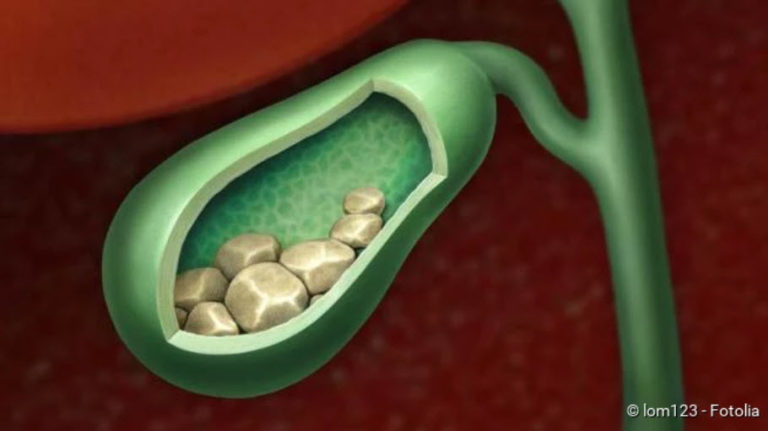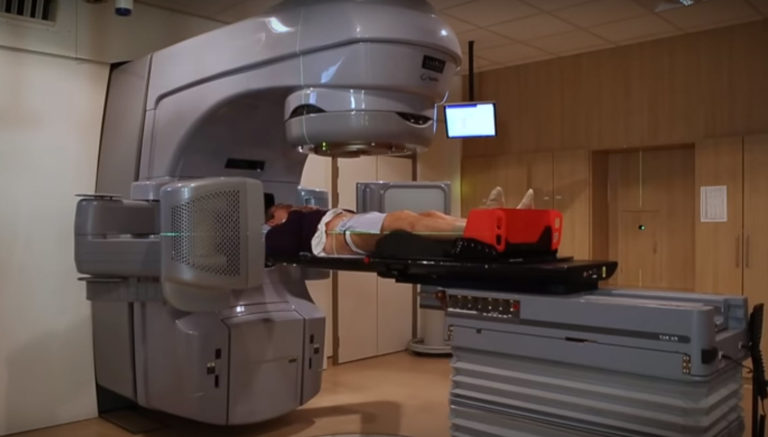Celiac disease (gluten intolerance): symptoms, course, diet
Celiac disease (gluten intolerance): symptoms, course, diet

Celiac disease: short overview
- Description: Overreaction of the immune system to the gluten protein gluten and an endogenous enzyme that breaks it down; inflammation of the small intestinal mucosa; deficiency symptoms due to poorer nutrient absorption.
- Symptoms: Occurs after eating foods containing gluten: Abdominal pain, flatulence, diarrhoea, often atypical complaints.
- Treatment: gluten-free diet, no wheat, barley, rye, green spelt etc., compensation of deficiencies, no causal therapy so far.
- Diagnosis: Celiac disease test: Detection of antibodies in the blood, biopsy of the small intestine mucosa, self-tests provide only insufficient results.
- Progonosis: If left untreated, complications can develop, such as lactose intolerance or cancer of the gastrointestinal tract.
What is celiac disease?
In celiac disease, the small intestine becomes inflamed. The immune system is to blame. It classifies the actually harmless gluten protein gluten as dangerous and overreacts as soon as patients ingest gluten with their food. This is found in many types of grain such as wheat, rye, barley, spelt or green spelt. And there is also a substance produced naturally in the body that stimulates the immune system of celiac disease patients: the enzyme tissue transglutaminase. It cleaves the gluten in healthy people.
Because gluten and the tissue transglutaminase are located on the intestinal mucosa, it becomes inflamed by the attacks of the immune system. Over time, the chronic inflammation damages the mucous membrane to such an extent that the food can no longer be absorbed normally into the blood through the intestines. Normally, the intestinal mucosa is wrinkled and forms so-called villi. This structure increases the surface area of the intestine. This has the advantage that the food components can pass from the intestines into the blood more quickly. In celiac disease, the autoantibodies destroy these protuberances. The consequence: severe deficiency symptoms can occur because less surface area is available for nutrient uptake.
In celiac disease the intestinal mucosa becomes inflamed. As a result, the intestinal villi are destroyed and the mucosal surface available for food intake decreases.
Allergy or autoimmune disease?
Whether celiac disease is an allergy or an autoimmune disease is a matter of controversy among experts. The fact is: celiac disease has elements of both an allergy and an autoimmune disease.
An allergy is generally an excessive reaction of the immune system to substances that are actually harmless. This is the case with celiac disease, as the immune system reacts to the actually harmless gluten with an excessive immune response.
On the other hand, the immune system in celiac disease also forms antibodies against the body’s own enzyme tissue transglutaminase. Since the immune system also attacks the body’s own structures in celiac disease, the definition of an autoimmune disease is therefore also fulfilled for gluten allergy. According to the current state of knowledge, celiac disease is therefore most likely to be a mixture of allergy and autoimmune disease. However, the term gluten allergy has not become established in science and should therefore rather be avoided.
Celiac disease: symptoms
If people with celiac disease consume foods containing gluten, they will experience typical symptoms. These primarily include stomach aches, flatulence and fatty diarrhoea. Besides these short-term symptoms, there are also long-term impairments: In celiac disease, the inflammation damages the mucous membrane of the intestines, making it harder for all food components to be absorbed into the body. As a result, severe deficiencies, such as iron deficiency, may occur. This makes it harder for the body to hold water in the vessels. Instead, it accumulates in the tissue – edemas form. Celiac disease patients also often lose weight in the long term due to gastrointestinal complaints.
Atypical symptoms
In some patients, gluten intolerance is associated with atypical symptoms, i.e. complaints that are not directly related to intestinal function, such as skin problems. The coeliac condition is then often only recognised at a late stage. The most common atypical signs of the disease include
- Liver disease with partly slightly elevated liver values
- Dermatitis with itchy reddish raised blisters
- Anaemia, burning of the tongue, foul mouth (due to iron deficiency)
- Osteoporosis, muscle weakness, muscle cramps, bone pain (due to calcium deficiency)
- Bleeding, for example in the skin (due to vitamin K deficiencies)
- Night blindness (due to vitamin A deficiency)
- Thyroid gland disorders
- Inflammation of kidney corpuscles
- Joint complaints
- Mood swings
- Depression
- Epileptic seizures
- Movement Coordination Disorder
- Nervous disorders
Symptoms of celiac disease in children
Gluten intolerance can also cause symptoms of digestive disorders in a small child. These can manifest themselves by a distended stomach, voluminous, bad-smelling diarrhoea or a refusal to eat. Some children stand out during preventive medical checkups at the pediatrician because they are not growing properly or their puberty is delayed. Iron deficiency is also a typical symptom of gluten intolerance in children. Signs of celiac disease can also be changes in the child’s nature or behaviour. The children are then conspicuously whiny, sullen or apathetic. Symptoms of coeliac disease often occur in children towards the end of the first year of life, i.e. about three to six months after the first gluten-containing cereal meal.
Celiac disease without symptoms or with minor complaints
In some people the typical antibodies for celiac disease can be detected in the blood and the mucous membrane of the small intestine is also characteristically altered. Nevertheless, the patients have no complaints or only minor, atypical symptoms such as fatigue or tiredness. A gluten-free diet is then often not necessary. In this case, celiac disease is usually discovered during a screening examination, which is carried out because close relatives have celiac disease.
Sometimes celiac disease antibodies can be detected even before the small intestinal mucus has changed. This can develop into celiac disease with symptoms, but this does not have to happen.
Celiac disease: treatment
If a person suffers from coeliac condition, the disease accompanies him throughout his life. So far there is no curative therapy. Those affected must permanently follow a gluten-free diet. If this is done consistently, however, the complaints almost always disappear completely. Within the scope of the celiac disease treatment, any deficiencies are also compensated until the affected intestine has normalised.
Celiac disease treatment: diet
Newly diagnosed celiac patients initially feel extremely restricted in their diet. In fact, from now on they will have to remove a large number of foods from their diet. However, the more intensively those affected inform themselves about the gluten-free diet, the more possibilities they will find to eat a gluten-free and yet varied diet.
The following tips will help you to decide which types of cereals and foods you should avoid if you are gluten intolerant and which you can eat without hesitation:
Strictly avoid: cereals containing gluten
You should avoid the following types of grain and products containing them completely and permanently if you are gluten intolerant:
- Wheat (below in this list there are other types of wheat)
- Rye
- Barley
- Spelt
- Green Spelt wheat
- Triticale
- “Einkorn” wheat
- sometimes oats (does not cause discomfort for all persons concerned)
Food containing gluten
Gluten is also found in many products containing cereals. In principle, since 2005 manufacturers have been obliged to label gluten-containing foods in accordance with the allergen labelling requirement. Ingredients containing gluten, such as wheat, must appear on the list of ingredients (exceptions: syrup, spirits). However, the term “gluten” itself need not be mentioned. For people with celiac disease it is therefore necessary to know which ingredients contain gluten. A food is considered gluten-free if it contains a maximum of 20 ppm (2 mg per 100g) gluten. There is also a special symbol with which gluten-free foods are marked: a crossed-out cereal ear.
The following foods almost always contain gluten. As a celiac disease patient you should also avoid these.
- Bread and other baked goods
- Noodles
- Pizza
- Muesli and other breakfast cereals
- Biscuits
- breaded meat
- Malt coffee
- Beer
- Soy sauce (there is also gluten-free soy sauce)
Gluten-free cereals
Fortunately, there are also some grains that do not contain gluten and are therefore safe for people with gluten intolerance. Gluten-free cereals include
- Rice
- Maize
- Millet
- Buckwheat
- Amaranth
- Quinoa
- Wild rice
- Teff (dwarf millet)
Gluten free food
The following foods are naturally gluten-free. They can therefore be eaten without hesitation (as long as they do not contain gluten additives):
- All fruit and vegetables
- Potatoes
- Meat, poultry, fish, seafood
- Legumes such as soya
- Eggs, milk, dairy products, butter, margarine
- Jams, honey
- Sugar, salt, herbs
- Nuts and oils
- Water and juices
- Wine and sparkling wine
- Coffee and tea
Treatment of celiac disease: Therapy of deficiency symptoms
In celiac disease, the intestines become inflamed due to attacks from the patient’s own immune system. This can interfere with the normal absorption of nutrients into the blood. In particular, vital vitamins and trace elements are affected and must be supplied by the coeliac condition in case of a deficiency. Vitamins often lack vitamin A, vitamin B6 and B12, folic acid and vitamin K . But also the trace elements iron, magnesium and calcium are often insufficiently absorbed in celiac disease.
The various deficiencies can have serious consequences in some cases. For example, too little iron, folic acid or vitamin B12 causes anaemia. The lack of vitamin K can cause severe bleeding. A typical consequence of calcium deficiency is muscle cramps.
If deficiency symptoms occur, the missing vitamins and trace elements must be supplied artificially. In lighter cases this is possible in the form of tablets or capsules. Sometimes, however, an infusion via the vein or at least an injection into the muscle is necessary, since the inflamed intestine could only insufficiently absorb the missing substances.
Treatment of coeliac disease in babies
If a pregnant woman suffers from celiac disease or if there are relatives with this disease in her family, she should breastfeed her child as long as possible. Breast milk has a proven protective effect against celiac disease. Studies from the United States and Sweden also suggest that small amounts of gluten-containing foods could also have a preventive effect in middle infancy. This had the greatest effect in the fifth to seventh month of life. This means that children who were fed gluten-containing foods at this age suffered less frequently from celiac disease later in life. On the other hand, children who come into contact with gluten at an earlier age appear to have an increased risk of coeliac disease.
If coeliac disease is suspected in babies and children, it should be checked immediately whether gluten intolerance is responsible for the symptoms. Otherwise, an undetected and thus untreated coeliac condition threatens to cause severe developmental disorders due to the lack of vitamins, trace elements and nutrients.
Untreatable celiac disease
The so-called refractory celiac disease is a very rare form of the disease, which occurs in about 1.5 percent of celiac patients. In case of a refractory celiac disease, the typical signs of gluten intolerance can be found in the blood and in a small intestine sample. However, the person affected cannot positively influence the disease with a strict gluten-free diet. A refractory coeliac condition is when the symptoms do not subside during a twelve-month gluten-free diet or when typical or atypical coeliac symptoms reappear after improvement. In this case the complaints can only be alleviated with medication. Research is being conducted into causal therapy approaches.
What about gluten free bread? Gluten-free bread from industrial production often contains less fibre and vital substances. Nevertheless, many people feel that certain foods are not good for them. Research is constantly providing new findings, for example the so-called FODMAPs – a group of foods to which some people are sensitive. If you have digestive problems, consult your doctor.
Celiac disease can be clearly identified by a blood test and an endoscopy – after which it is necessary to give up gluten for life. Acquired gluten sensitivity can occur, for example, after a stomach flu. But you can also get rid of them again, for example by a exclusion diet. After four to six weeks of a gluten-free diet, you will slowly start gluten again. It’s like hyposensitizing the intestines.
Some patients eat gluten and do not really have any complaints. However, this is not necessarily the same in the intestine. In principle, a continuous “irritation” caused by gluten increases the risk of local lymphoma. I always tell my patients, if there’s no other way, eat gluten. However, you should not start eating larger amounts of gluten, but try to follow the recommendation to 90 to 95 percent.
Celiac disease: causes and risk factors
The mechanisms that take place in the body during celiac disease are already relatively well understood. Nevertheless, it has not yet been possible to clarify why celiac disease ultimately develops. Among other things, genetic factors contribute to this. Since not all people with a corresponding predisposition actually suffer from celiac disease, there must be other influencing factors. It is suspected that nutrition and other environmental factors also play a role.
Hereditary factors
Hereditary factors are very likely to play a significant role in celiac disease. About 90 percent of those affected have a specific surface protein on their immune cells. This protein binds fragments of gluten and is involved in the inflammatory immune response. Since it is inherited, family members of those affected have an approximately ten to 15-fold higher risk of developing celiac disease. Other autoimmune diseases such as a form of diabetes mellitus type 1 or autoimmune thyroiditis are also associated with this surface protein. However, about 30 to 40 percent of healthy people also possess this surface protein. Therefore, environmental factors also seem to have an important influence on the development of the disease.
Food and environment
People who have already come into contact with gluten-rich food as newborns are more likely to suffer from coeliac condition. Baby food should consist of breast milk or gluten-free food, especially if the baby has close relatives with gluten intolerance. From the fifth month of life, however, small amounts of gluten can have a preventive effect again. Infections with intestinal viruses or a change in the bacterial intestinal flora are also discussed as possible risk factors. In addition, psychosocial factors should also contribute to the development of celiac disease.
Connection with other diseases
Celiac disease often occurs together with other diseases. People with Turner syndrome, Down’s syndrome, IgA deficiency, type 1 diabetes and other autoimmune diseases such as autoimmune thyroid disease (thyroiditis) or inflammation of the liver (autoimmune hepatitis) are much more likely to develop gluten intolerance. It is still unclear, however, why celiac disease also occurs frequently with these diseases.
Celiac disease: examinations and diagnosis
The right person to contact if you suspect gluten intolerance is a specialist in internal medicine who specialises in diseases of the digestive tract (gastroenterologist).
Celiac disease: medical history and physical examination
First, the doctor will ask about your current complaints and any previous illnesses (anamnesis). For example, he could ask you the following questions if you suspect that you have celiac disease or after a positive celiac disease self-test
- Have you been suffering from diarrhoea or stomach aches lately?
- Have you lost weight unintentionally in the last weeks and months?
- With children and young people: Are there growth disorders? Is puberty delayed?
- Have you noticed any abnormalities in the skin?
- Is there a family member with gluten intolerance?
- Have you ever had a coeliac condition test or have you carried out a self-test?
The medical history is followed by a physical examination. The doctor looks for coeliac specific abnormalities of the skin and tongue. He listens to the abdomen with a stethoscope to check the bowel sounds. In addition, he taps and palpates the patient, whereby he can detect increased air in the abdomen, fluid but also thickening of the intestines. Since the intestine can only be assessed to a limited extent from the outside, further examinations are usually necessary for a diagnosis of celiac disease.
Celiac disease test
A celiac disease test determines antibodies in the blood serum that are typical for gluten intolerance. If the coeliac condition is pronounced, a test via the air we breathe is also possible. There is also a self-test to detect gluten intolerance. However, this does not work very reliably. Under no circumstances should you rely on the result of the self-test, but always consult a doctor.
You can read about when to carry out the celiac disease test and how it works exactly in the article Celiac disease test.
In addition to the celiac disease test, a tissue sample can be taken from the small intestine. If it shows the typical coeliac changes, the patient is gluten intolerant. The tissue sample can be dispensed with if symptoms typical of celiac disease occur, very high antibody levels are present and a typical genetic disposition for celiac disease exists.
If the diagnosis is uncertain despite the tests performed, you should first follow a gluten-free diet for eight weeks. After a targeted gluten exposure, both the tissue sample and the celiac disease test can be repeated in the blood.
A diagnosis of celiac disease is not always easy, because not all patients suffer from the typical symptoms. Up to 90 percent of those affected complain of atypical symptoms, which are often not correctly interpreted for many years. Thus, it takes an average of four years before a diagnosis is made.
Celiac disease: course of the disease and prognosis
Celiac disease is a disease that accompanies sufferers throughout their lives. However, under a gluten-free diet the symptoms usually disappear completely. However, a gluten-free diet initially poses major problems for many people, as it represents a massive break in their previous eating habits. However, if the person concerned takes a detailed look at the possibilities of a gluten-free diet, a varied diet is possible.
Celiac disease patients in whom the disease has been present for a long time have an increased risk of certain cancers of the gastrointestinal tract (intestinal T-cell lymphoma, adenocarcinoma). In addition, the inflammation in the intestine can lead to serious deficiencies of vitamins, trace elements and other nutrients, and other digestive disorders, such as lactose intolerance, can also occur. Intestinal inflammation leads to a deficiency of the lactose-cleaving enzyme lactase, which normally performs its function in the area of the intestinal mucosa of the small intestine. As a result, the lactose can no longer be digested and lactose intolerance often occurs, at least temporarily. All these consequences of the disease are usually not relevant for people who know about their disease and can protect themselves with a gluten-free diet.
However, there are a large number of people in whom celiac disease has not yet been diagnosed. Thanks to new examination possibilities, the disease can now be diagnosed very easily. People with typical symptoms, associated concomitant diseases and relatives with celiac disease should be tested.
Celiac disease: Frequency
Celiac disease is a common disease. However, the majority of those affected do not have a full picture of the disease. This means that although many people have proven to have celiac disease, the symptoms are minor or moderate.
Overall, women are more frequently affected than men. Celiac disease in children occurs more frequently between the first and eighth years of life and in adults between the ages of 20 and 50. In principle, however, the disease can develop at any age.
The number of coeliac diseases has been rising steadily in recent years. This is probably due to the fact that the disease is now better known and can also be better diagnosed. Other reasons include environmental factors such as gastrointestinal infections, changing eating habits and psychosocial factors. However, there is no clear explanation for the increase in cases of illness.





